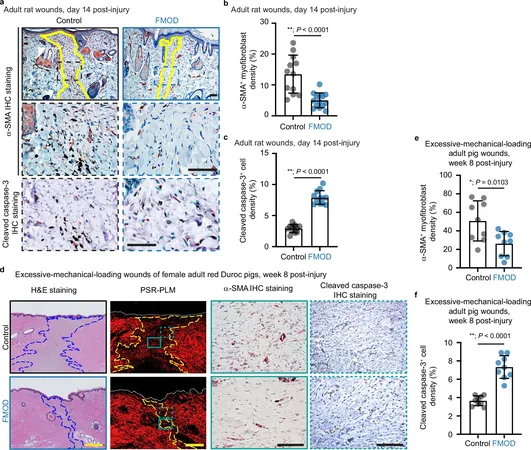
Shocking Surge in Strokes Among Younger Adults: Study Reveals Clues!
2025-04-17
Author: Nur
Rise of Unexplained Strokes in Young Adults
Strokes are no longer just a concern for the elderly; a startling rise in strokes among adults under 50 has become evident, with many cases labeled as cryptogenic—meaning they strike without a clear cause such as high blood pressure or diabetes. New research sheds light on a surprising culprit: a common heart condition called patent foramen ovale (PFO).
The Connection Between PFO and Nontraditional Risk Factors
According to the latest study published in the American Heart Association's journal, *Stroke*, individuals with PFO experienced cryptogenic strokes linked to nontraditional risk factors like chronic kidney disease and cancer far more often than those without the condition. The revelation is alarming, especially since migraine with aura emerged as the top nontraditional risk factor tied to strokes in young women and PFO patients.
Migraine Sheds New Light on Stroke Risk
Lead researcher Dr. Jukka Putaala expressed surprise at how significant migraines were in the equation of strokes among younger adults. While traditional stroke risks like obesity and smoking are well-known, understanding nontraditional factors like migraines could lead to tailored and effective prevention strategies.
Women's Unique Risk Factors Revealed
The study also illuminated unique risks for women. Factors like gestational diabetes and preeclampsia were notably more prevalent among women who have suffered strokes, indicating a need for heightened awareness and targeted screening for female patients.
Research Methodology and Implications
This crucial research analyzed health data from 523 adults aged 18-49 with cryptogenic ischemic strokes, comparing them with a control group of the same age. Findings indicate a stark increase in stroke risk with each additional nontraditional factor present, more so in individuals with PFO.
Importance of Comprehensive Risk Evaluation
While the findings are groundbreaking, it’s essential to approach them with caution. The study, based on existing data, doesn’t definitively prove cause and effect. Still, it calls for healthcare professionals to rethink how they assess stroke risks among younger populations, particularly women.
Towards Effective Stroke Prevention
Dr. Putaala emphasized the need for comprehensive evaluations of both traditional and nontraditional risk factors to develop a robust prevention strategy for younger individuals, where nearly half of all ischemic strokes are currently unexplained.
A Call to Action in Stroke Awareness
With the odds continually increasing, especially for young women, redefining stroke screening protocols could save lives. Recognizing the distinctive risks they face is essential for empowering patients with knowledge and preventive care.

 Brasil (PT)
Brasil (PT)
 Canada (EN)
Canada (EN)
 Chile (ES)
Chile (ES)
 Česko (CS)
Česko (CS)
 대한민국 (KO)
대한민국 (KO)
 España (ES)
España (ES)
 France (FR)
France (FR)
 Hong Kong (EN)
Hong Kong (EN)
 Italia (IT)
Italia (IT)
 日本 (JA)
日本 (JA)
 Magyarország (HU)
Magyarország (HU)
 Norge (NO)
Norge (NO)
 Polska (PL)
Polska (PL)
 Schweiz (DE)
Schweiz (DE)
 Singapore (EN)
Singapore (EN)
 Sverige (SV)
Sverige (SV)
 Suomi (FI)
Suomi (FI)
 Türkiye (TR)
Türkiye (TR)
 الإمارات العربية المتحدة (AR)
الإمارات العربية المتحدة (AR)